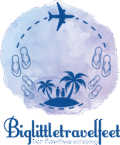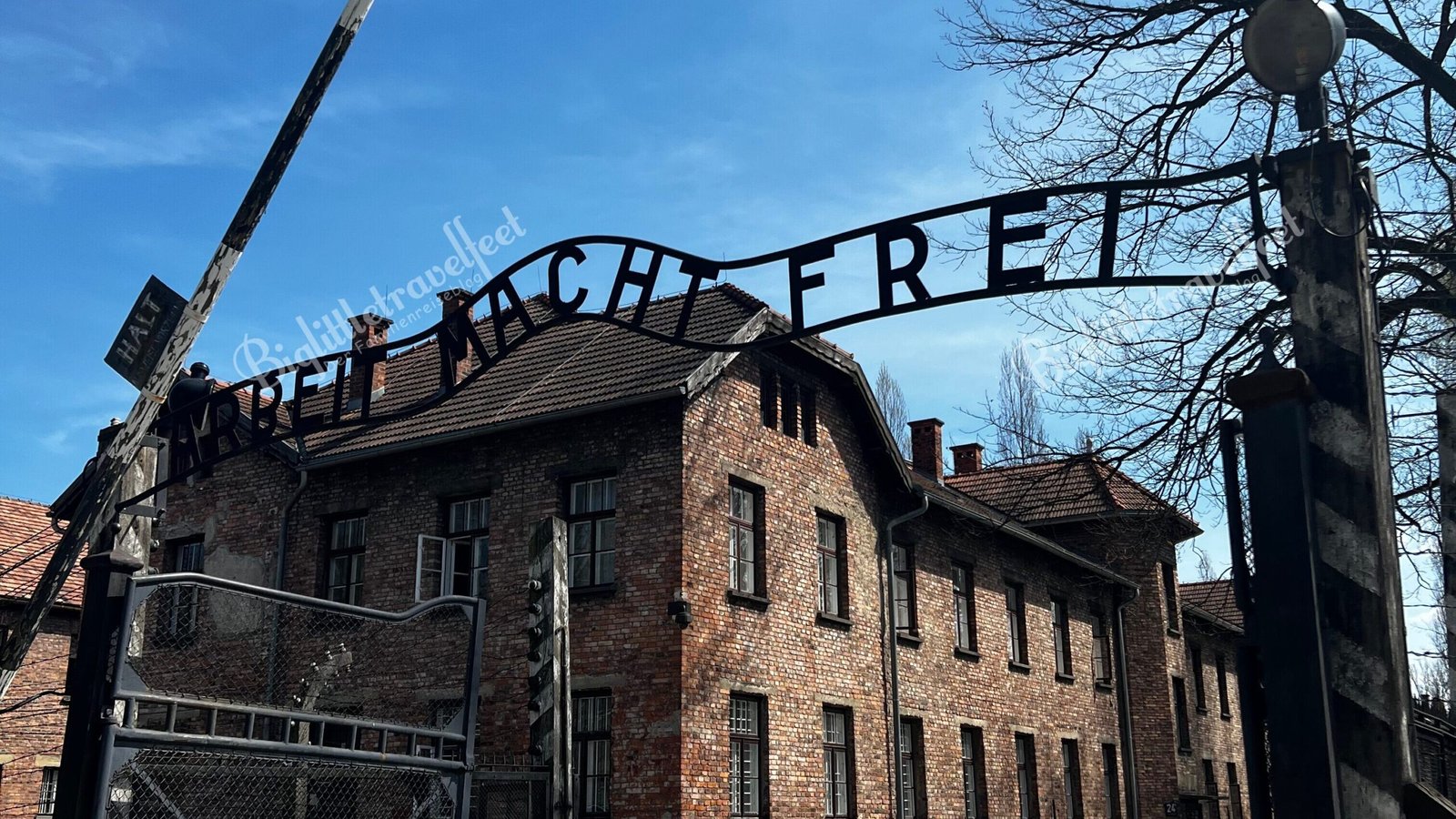
I can’t really explain why exactly, but visiting the former concentration and extermination camps of Auschwitz and Birkenau has been a priority for me for a long time. The day trip there was a deeply moving experience, but one I wouldn’t want to miss! Especially in these times of political uncertainty, it’s not wrong to remember the ultimate symbol of the Holocaust and, above all, the journey there.
However, in my opinion, the official recommendation for visiting Auschwitz and Birkenau is, quite rightly, only for those aged 14 and over. Even though we spotted families with significantly younger children during our stay, I would strongly advise against it!
You should definitely buy tickets well in advance and exclusively through the official website (see below)! The website also offers many ways to prepare for your visit – both emotionally and organizationally. While all tours including transfers from providers like GetYourGuide seem to guarantee admission, they purchase tickets from an unpredictable and daily remaining quota at the ticket office upon arrival. This can result in you having to wait for hours for admission or, in the worst case, unexpectedly missing out! Be sure to check the provider’s reviews – some of them feature very unhappy customers! If you can’t book tickets online, you can of course test your luck and try to snag one of the remaining tickets for the same day early in the morning. Transfer by taxi, Uber, or Bolt is definitely cheaper and more reliable than the wildly overpriced trips from Comfort Tours Krakow and the like!
And perhaps a helpful information for your trip planning: Eating and drinking (apart from water) are prohibited on the entire museum grounds!
“Wir sind alle gleich. Es gibt kein christliches, kein muslimisches, kein jüdisches Blut. Es gibt nur menschliches Blut.”
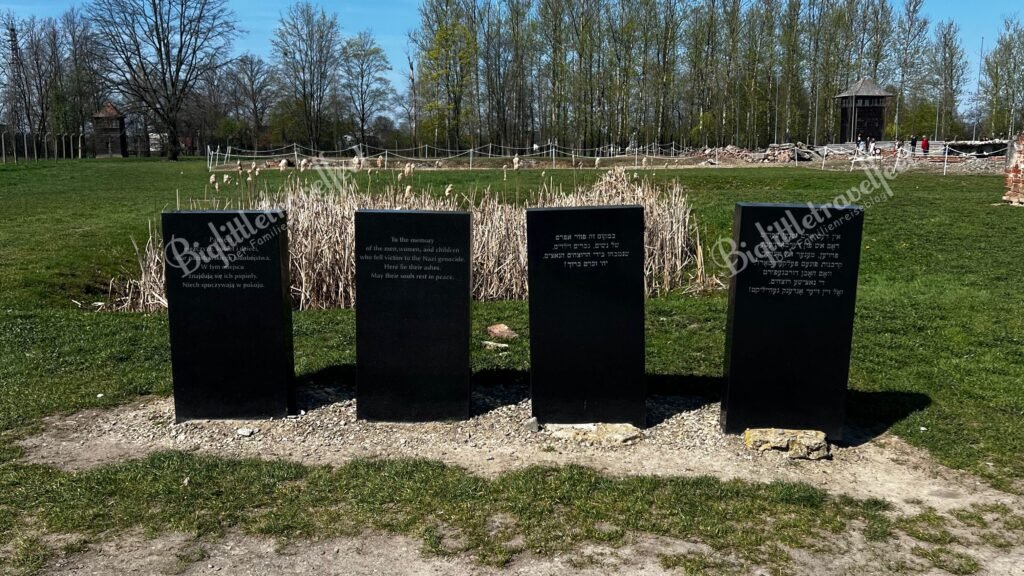
I will deliberately not write a history essay about the Nazi era, the Holocaust, and the Auschwitz concentration camp, but rather describe the itinerary of our trip and my personal impressions. Those interested in learning more about the historical background will find some helpful links at the end of this article.
The drive from our hotel in Krakow took about 80 minutes and began with a mixture of curiosity and trepidation. The roads that led us out of Krakow’s city center and through the picturesque Polish countryside stood in stark contrast to the destination, which holds so many stories of suffering and loss.
Arriving at the huge parking lot and entrance area of the museum in Oświęcim, the city’s Polish name, which was already very full by 8:30 a.m. the next morning, one might have thought one was not in front of the museum of the former concentration camp, but in front of one of the trendy amusement parks: Alongside the crowds, one finds snack and drink vending machines, a huge café, and restrooms. The quiet reverence one might have expected was none of it.
We went through security early and ended up in a large hall with an information desk, a cloakroom, and more restrooms. Here, too, the noise and the people’s behavior were more like a train station concourse. I was somewhat taken aback; I had expected anything, but not such a mass processing of visitors: every 15 minutes, four tours in different languages started simultaneously. Maybe it was the time of year or the holidays, but it was quite impressive!
Our tour began in the basement, where we received our headphones. We then went through a modern tunnel to the outside and the actual start of the tour of Auschwitz. In the tunnel and on the way out, the names of those who died in the concentration camp were heard over the loudspeakers. This suddenly changed the behavior and mood of the visitors. The crowds were also nowhere to be seen. It suddenly seemed as if our tour group was almost alone on the vast site. During the 7-minute introductory video, we learned about the history of the camp, which was originally a Polish barracks and was built from 1940 onwards as an internment camp for Polish political prisoners. Later, it became a central site of the Holocaust, where over 1.1 million people, mostly Jews, lost their lives. At this point, I wasn’t the only one who shed tears.
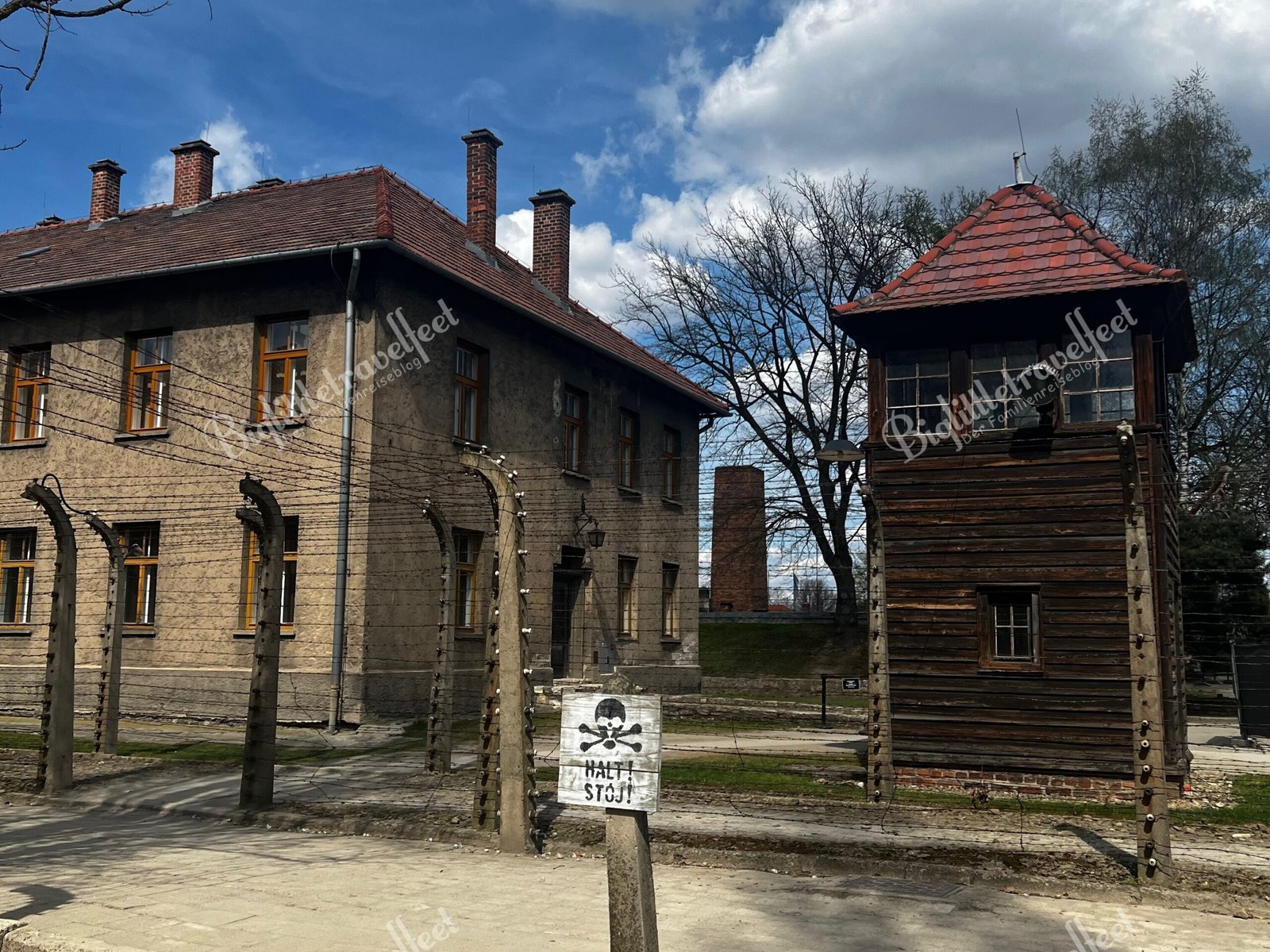
A few meters further is the world-famous entrance gate with the cynical inscription “Arbeit macht frei” (Work sets you free).
The brick barracks of Auschwitz I now house exhibitions that document the atrocities in a variety of ways: Behind glass display cases lie the victims’ personal belongings: shoes, suitcases, glasses, and even strands of hair. These artifacts tell stories of people who were brought here, often under the pretext of resettlement, only to die of starvation or disease or be murdered in the gas chambers. The tour of the Auschwitz complex lasts approximately two hours.
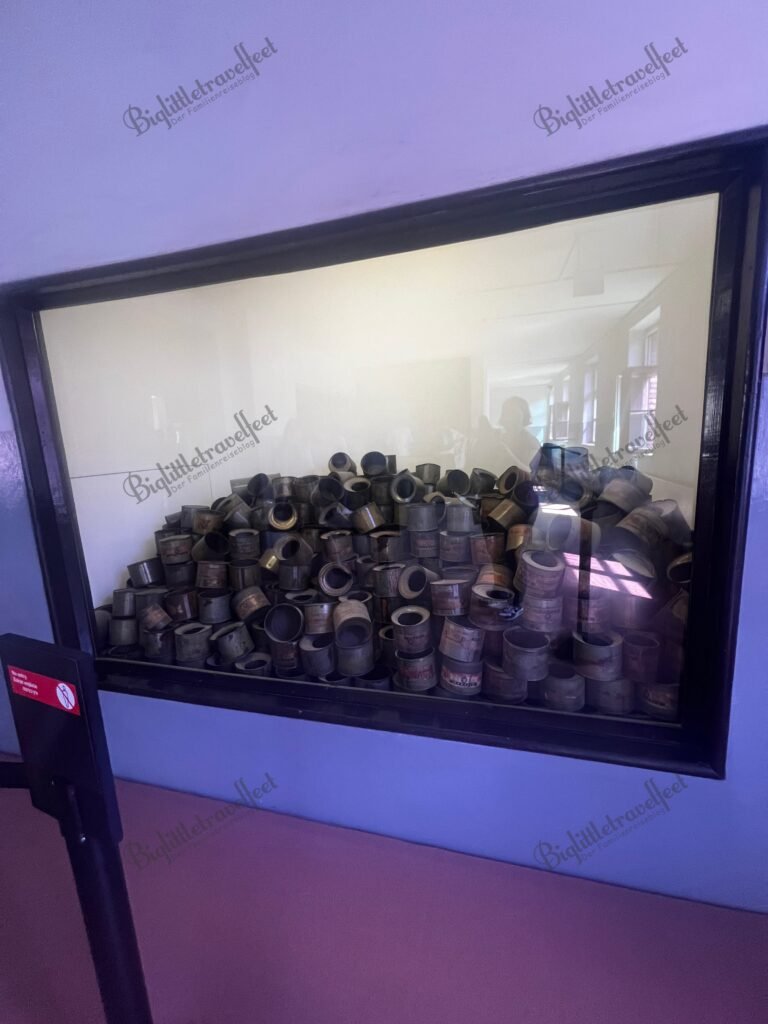
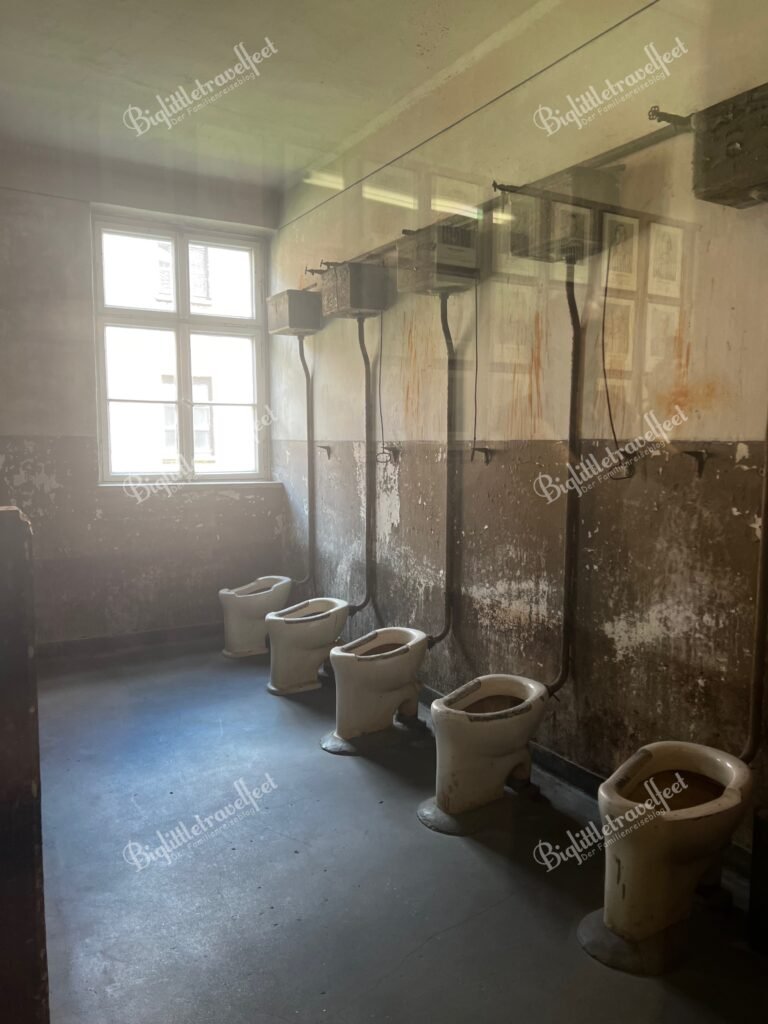
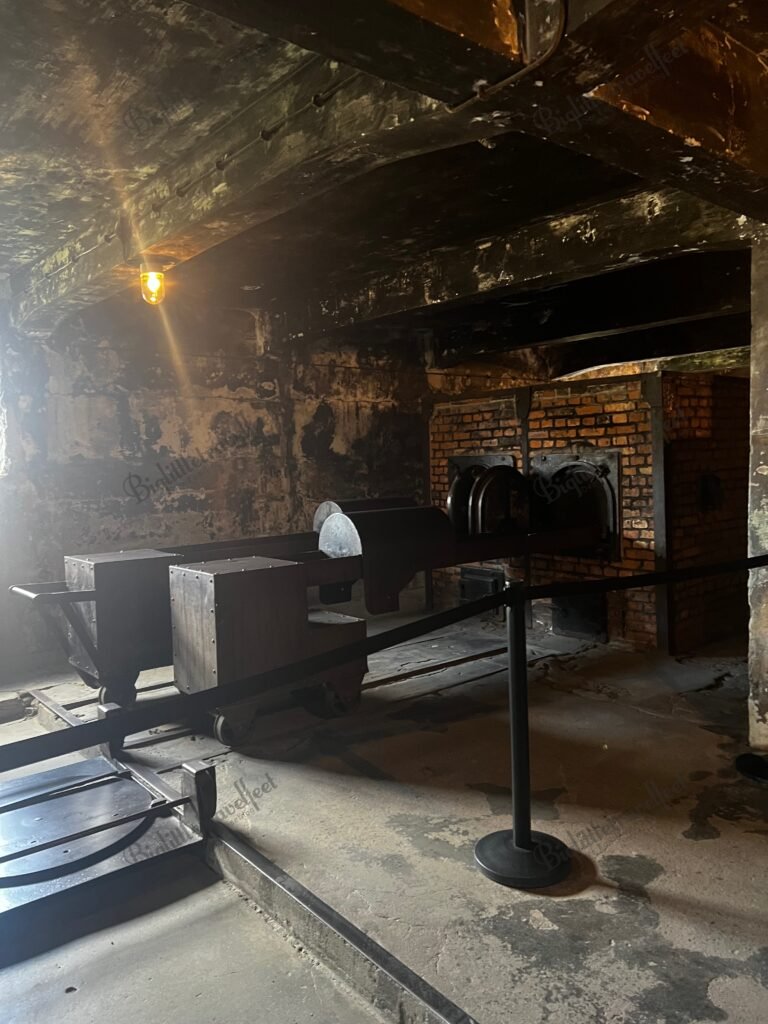
After visiting Auschwitz I, you can take the free shuttle bus every 10 minutes to Birkenau, also known as Auschwitz II, which is 3 km away. Here you will meet up again with your guide and tour group for a 1.5-hour guided tour. Unlike at Auschwitz, however, you are allowed to explore the site without a guide. With the horrific stories of the inmates still fresh in our minds, we decided to explore Birkenau without our tour group, but with plenty of emotions in our luggage.
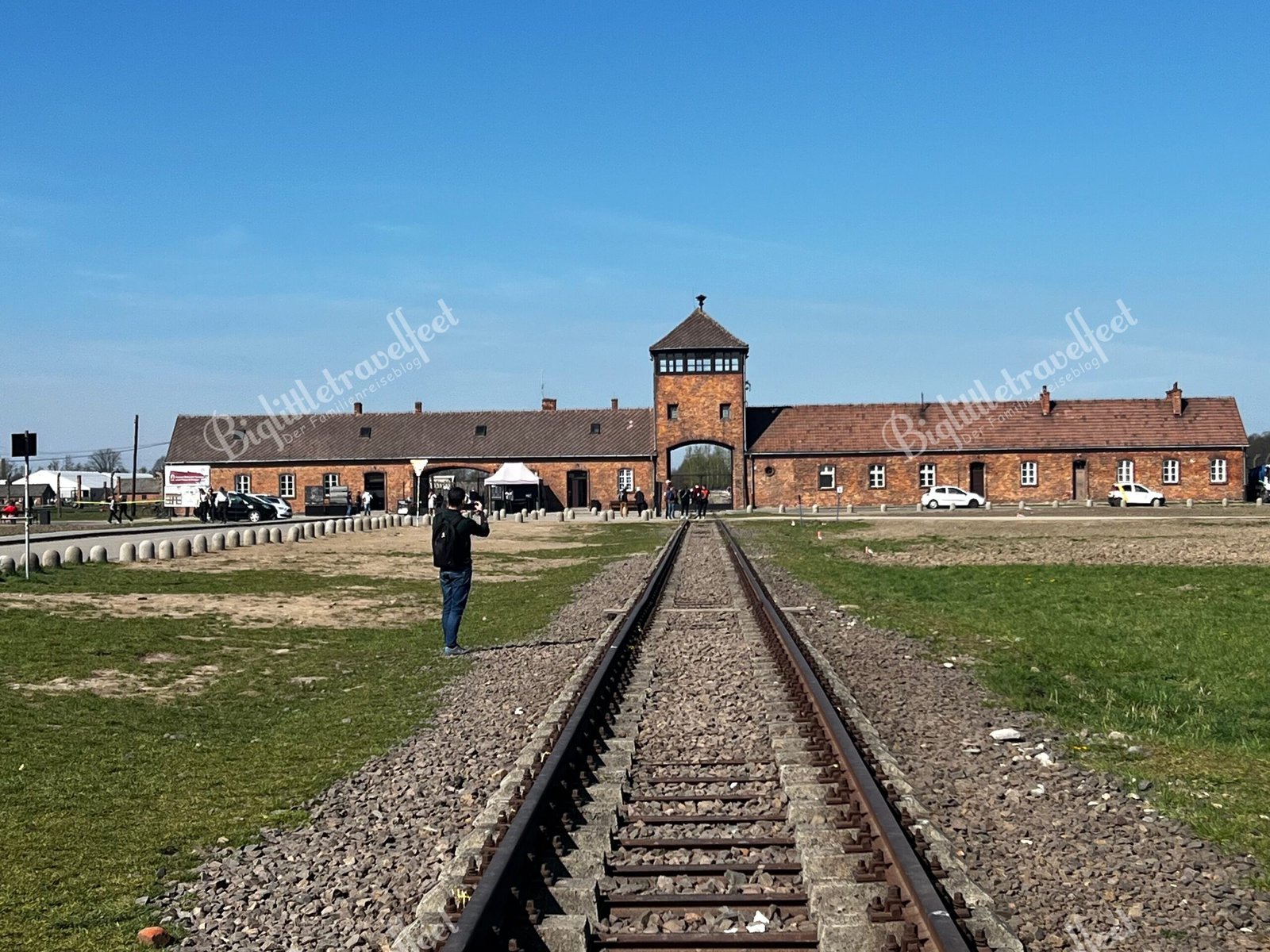
This camp is more extensive and conveys an even stronger sense of the enormity of the crime. The iconic railway tracks, which lead directly into the camp, end at the ramp where the second selection took place. The remains of the gas chambers and crematoria stand silent witnesses to the systematic extermination.
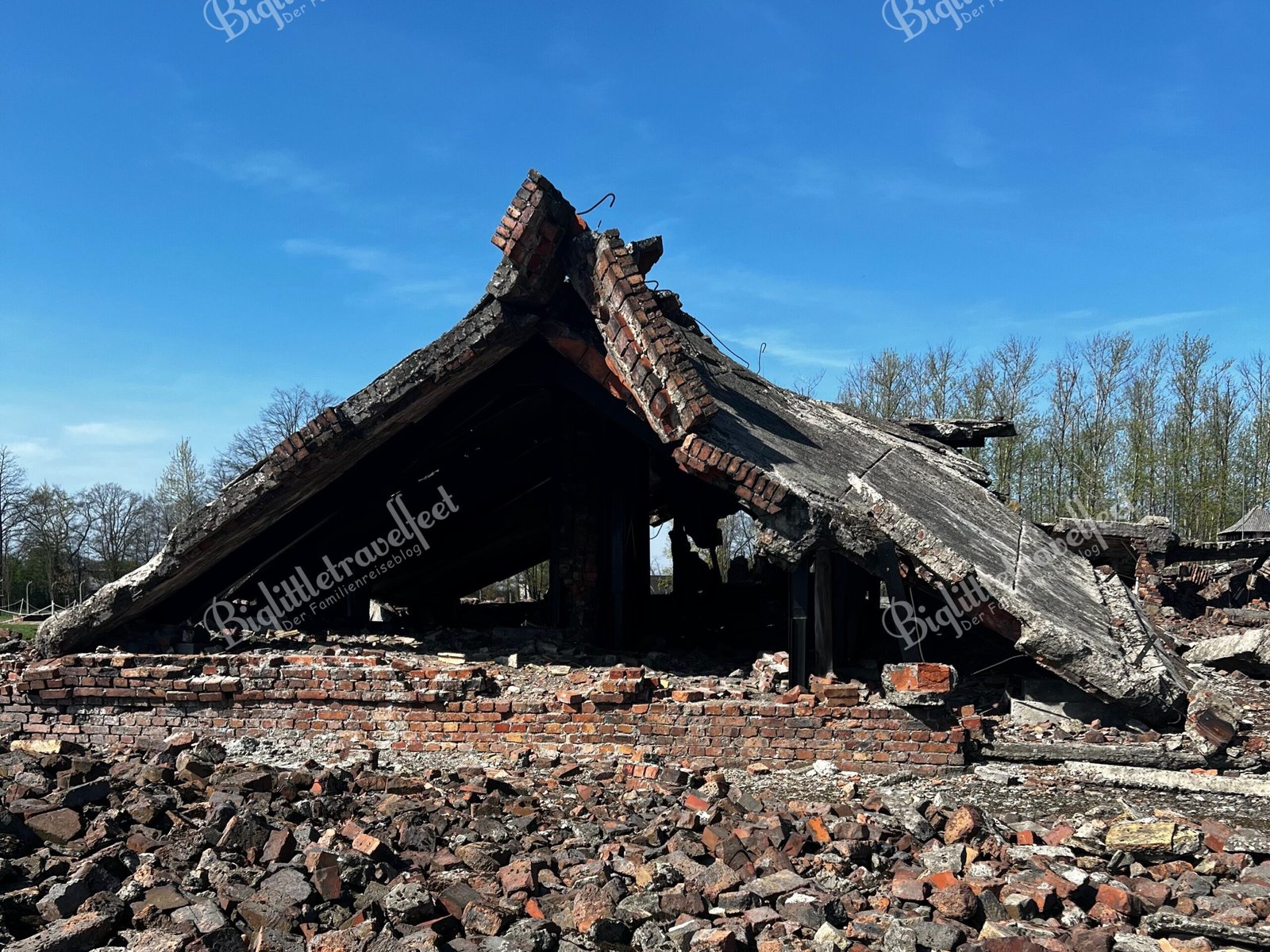
In the vastness of the grounds and the (actually eerie and not at all peaceful) silence, we let the impressions and information of the past few hours sink in. The wooden barracks in which the prisoners lived under inhumane conditions are still standing, as are the watchtowers surrounding the camp. It’s almost impossible to imagine how people could have survived here, even for a short time.
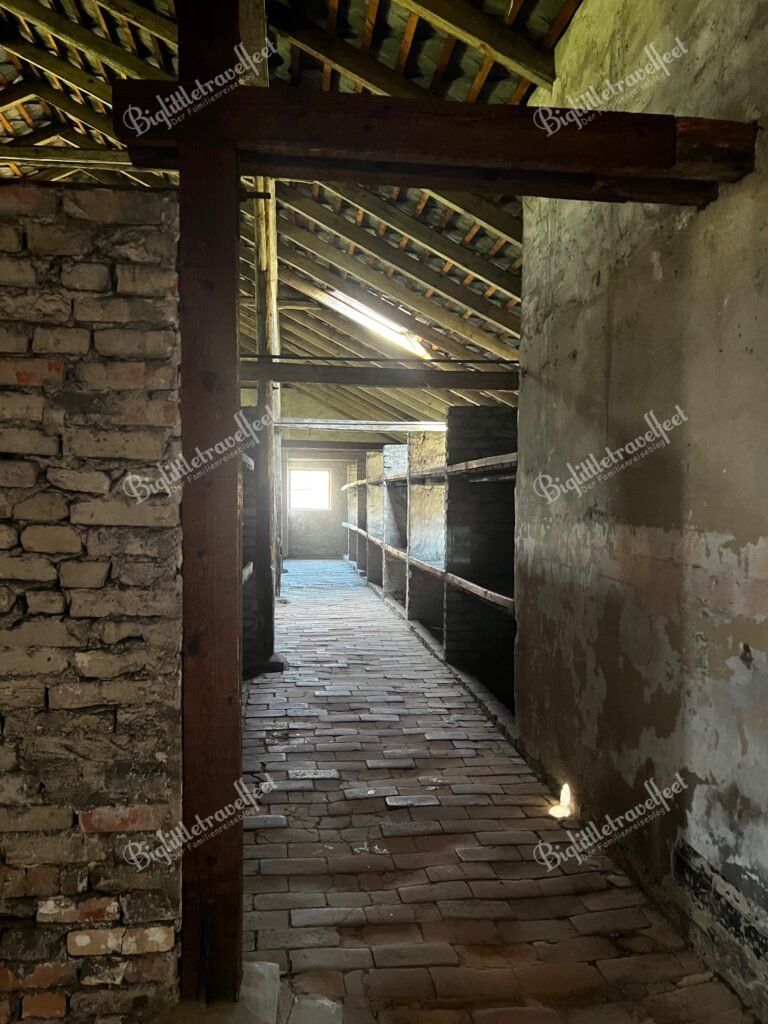
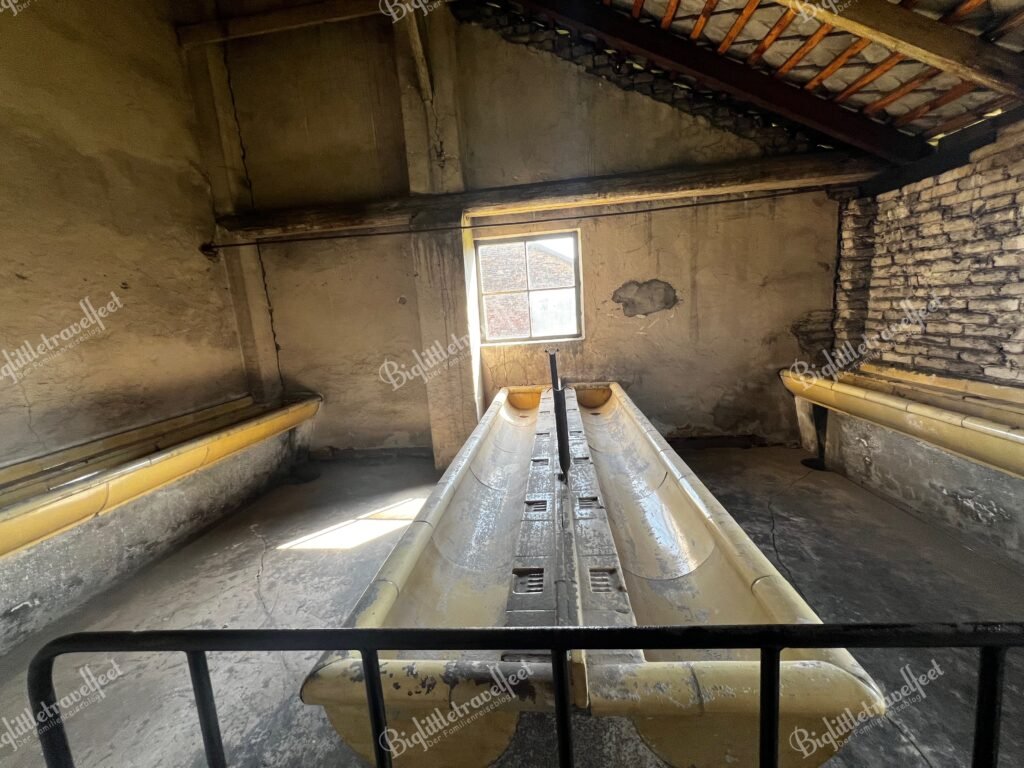
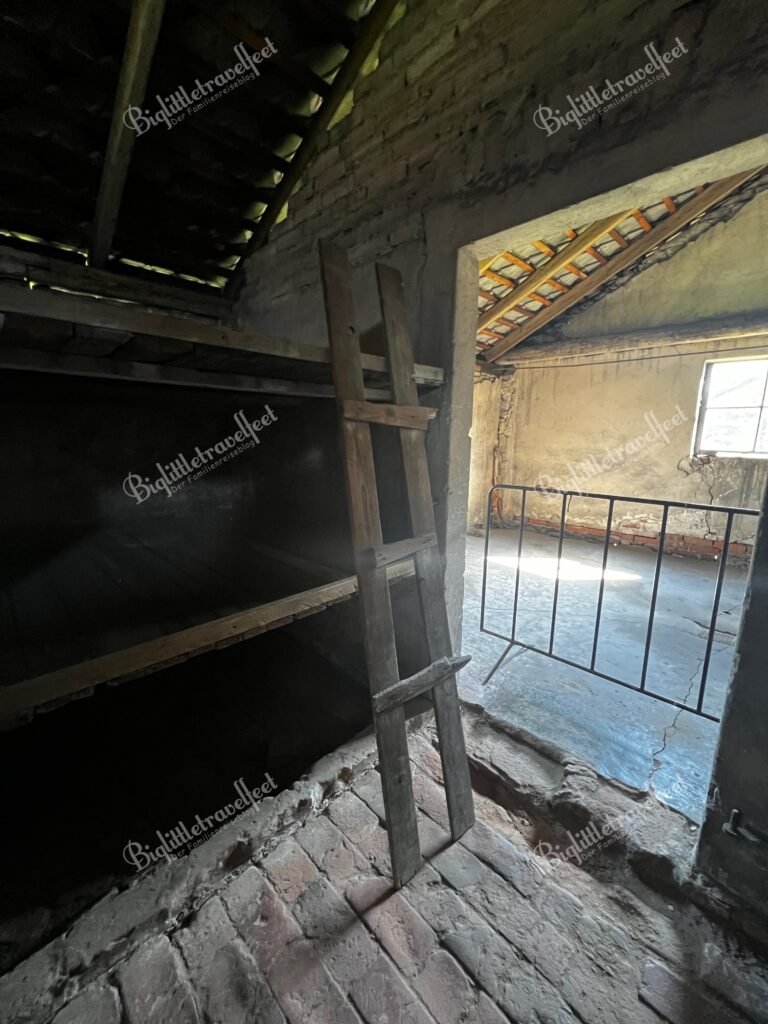
After this, the tour of and inside Auschwitz and Birkenau ended. However, we were able to persuade our driver to make a brief stop at the Old Ramp (also called the Jewish Ramp), 1 km away, on the way back to Krakow. This is where the deportees arrived, and the first major selection took place. Families were torn apart, and the fate of most people was decided in a matter of minutes by the mere gesture of the SS doctor.
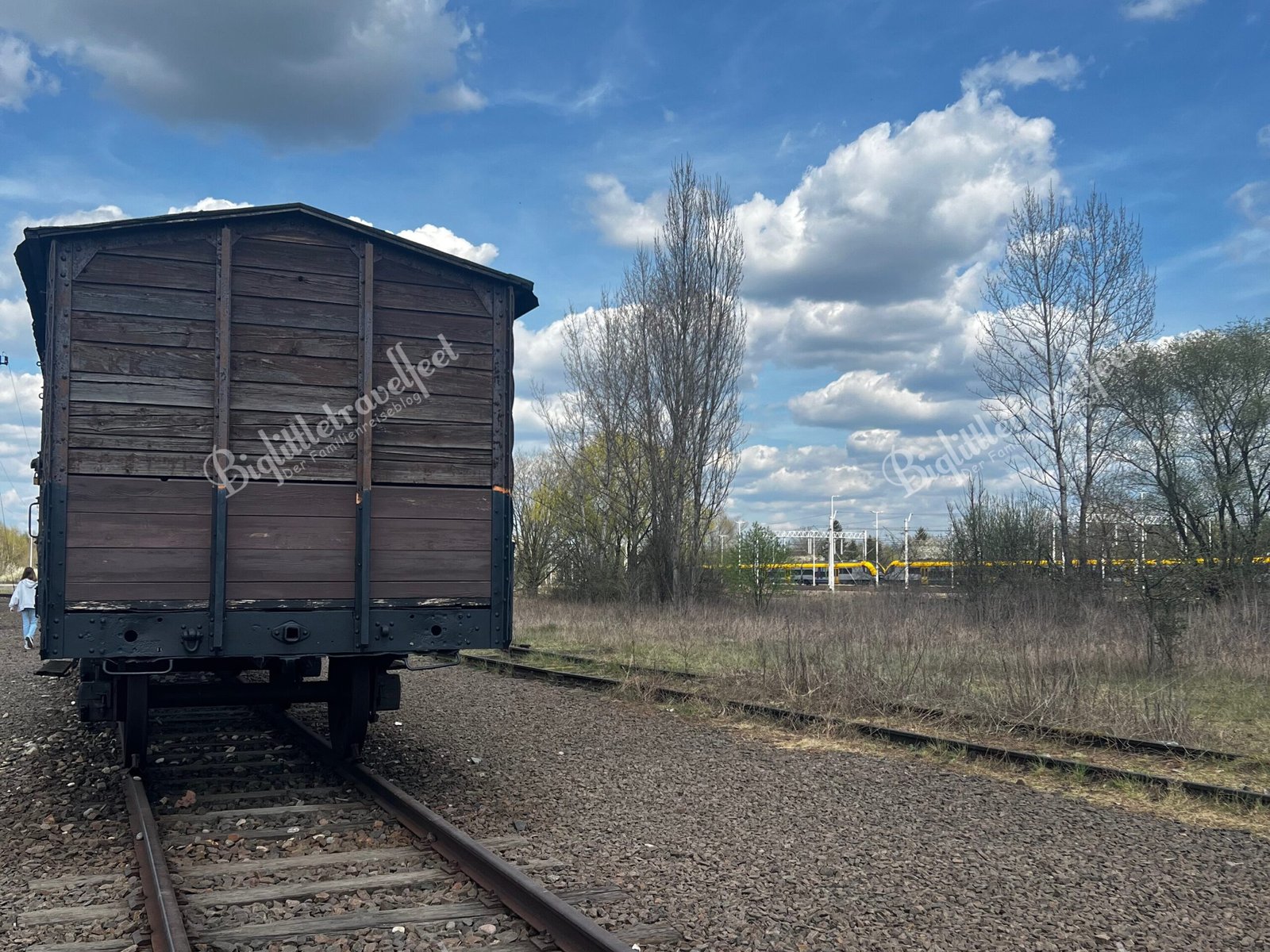
The return trip to Krakow was a time of reflection for us. While we had been chatting animatedly on the outward journey, it was now quiet, lost in thought about what we had seen and heard. The trip to Auschwitz and Birkenau was not an easy one, but it was (for me) a necessary reminder of the darkest chapters in human history. It reminds us to remain vigilant and is a lesson in history and empathy that will surely resonate for a long time to come.
With that in mind: שָׁלוֹם עֲלֵיכֶם
Helpful Links:
https://www.auschwitz.org/en/visiting
https://www.bpb.de/kurz-knapp/lexika/das-junge-politik-lexikon/320492/holocaust-schoa
